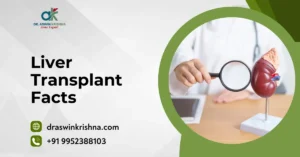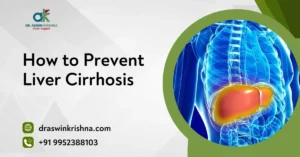Non-alcoholic fatty liver disease (NAFLD) is more common than most realize—a silent buildup of fat in the liver not caused by alcohol. It often develops quietly, showing little to no symptoms until liver function begins to decline. For many, this condition is a wake-up call—a signal to rethink diet, lifestyle, and metabolic health.
Non alcoholic fatty liver disease treatment focuses on reversing fat accumulation through personalized nutrition, regular exercise, and medical guidance. It’s not just about curing the liver—it’s about transforming the way the body processes and protects itself from metabolic damage.
What is Metabolic Dysfunction-Associated Steatotic Liver Disease?
Metabolic Dysfunction-Associated Steatotic Liver Disease (MASLD) is the updated medical term replacing “non-alcoholic fatty liver disease.” It highlights the link between liver fat buildup and underlying metabolic issues such as obesity, diabetes, and insulin resistance. While it may sound clinical, it’s essentially the same condition—just understood more deeply and accurately in medical science.
- A reflection of overall metabolic imbalance: MASLD develops when the liver stores excess fat because of insulin resistance or poor lipid metabolism. Over time, this can lead to inflammation, fibrosis, or even cirrhosis if left untreated. Early non alcoholic fatty liver disease treatment aims to stop this process before it reaches those stages.
- More than just a liver condition: It’s part of a larger systemic issue involving metabolism, heart health, and insulin sensitivity. Addressing only the liver won’t suffice—doctors now emphasize holistic treatment that improves the body’s overall metabolic function.
- A shift toward personalized care: The new classification allows specialists to create individualized non alcoholic fatty liver disease treatment plans that consider weight management, blood sugar levels, and dietary patterns rather than treating the liver in isolation.
Causes
Understanding the non alcoholic fatty liver disease causes is essential for preventing and managing the condition effectively. Unlike alcohol-related liver disorders, this condition develops from everyday lifestyle and metabolic factors that gradually burden the liver. Identifying these triggers early can make non alcoholic fatty liver disease treatment more successful and sustainable.
- Unhealthy dietary patterns: Consuming high amounts of processed foods, sugary drinks, and refined carbohydrates leads to fat buildup in the liver. These foods cause insulin spikes, promoting fat storage and inflammation—key contributors to non alcoholic fatty liver disease causes.
- Obesity and insulin resistance: When body fat accumulates, especially around the abdomen, it interferes with how the liver processes fat. Insulin resistance then worsens the problem by allowing more triglycerides to collect within liver cells, intensifying the need for targeted non alcoholic fatty liver disease treatment.
- Sedentary lifestyle: A lack of physical activity slows metabolism, reduces fat utilization, and increases liver fat storage. Regular exercise helps break this cycle by improving insulin sensitivity and supporting liver detoxification.
- Genetic and hormonal influences: Family history, thyroid disorders, and conditions like polycystic ovary syndrome (PCOS) can make individuals more susceptible. These factors alter how the body handles fats and sugars, making non alcoholic fatty liver disease causes more complex and interlinked with overall metabolic health.

Symptoms
Non-alcoholic fatty liver disease often begins silently, with most people unaware of the damage occurring inside. By the time symptoms appear, fat accumulation has already started affecting liver function. Recognizing these early warning signs is crucial for timely non alcoholic fatty liver disease treatment and preventing long-term damage.
- Persistent fatigue and weakness: Many individuals experience unexplained tiredness even after adequate rest. This happens because the liver struggles to process nutrients and toxins efficiently, leading to lower energy levels.
- Abdominal discomfort or fullness: A dull ache or pressure in the upper right side of the abdomen is a common sign of non alcoholic fatty liver disease pain. It may feel like bloating or tightness, caused by liver enlargement and inflammation.
- Unexplained weight gain or difficulty losing weight: When the liver becomes overloaded with fat, it disrupts the body’s ability to metabolize calories effectively. This imbalance can lead to stubborn weight gain, especially around the midsection, despite lifestyle changes.
- Mild jaundice or changes in skin tone: Though less common in early stages, some people notice yellowing of the eyes or skin. It indicates the liver’s struggle to process bilirubin properly, requiring prompt medical evaluation and a tailored non alcoholic fatty liver disease treatment plan.
Risk Factors
Certain lifestyle habits and health conditions make some individuals more prone to developing fatty liver than others. Recognizing these triggers helps in creating a preventive plan and choosing the right non alcoholic fatty liver disease treatment before complications arise.
- Obesity and metabolic syndrome: Excess body fat, particularly around the abdomen, is a major contributor to non alcoholic fatty liver disease pain and progression. It’s closely linked with insulin resistance, high blood pressure, and abnormal cholesterol levels, all of which strain the liver.
- Type 2 diabetes and prediabetes: High blood sugar levels increase fat accumulation in liver cells, promoting inflammation and scarring. For diabetics, non alcoholic fatty liver disease treatment must also address glucose control to slow down liver damage and improve metabolic balance.
- High cholesterol and triglycerides: When lipid levels are elevated, the liver works overtime to process them, leading to fat storage and oxidative stress. Managing these levels plays a vital role in determining how to get rid of non alcoholic fatty liver disease effectively.
- Unhealthy lifestyle and poor diet: Skipping meals, eating late at night, and relying on processed foods worsen liver fat accumulation. A diet rich in fiber, lean protein, and antioxidants can significantly reduce non alcoholic fatty liver disease pain and improve liver function.
- Genetic predisposition and hormonal factors: A family history of fatty liver, obesity, or hormonal imbalances like PCOS can heighten vulnerability. Understanding these risks helps determine can non alcoholic fatty liver disease be reversed through early lifestyle intervention and consistent monitoring.
Treatment
Effective non alcoholic fatty liver disease treatment focuses on reversing liver fat accumulation and restoring metabolic balance. Since there’s no single medication that cures the condition, the best approach combines lifestyle transformation, medical supervision, and long-term commitment to healthy habits.
- Lifestyle modification and weight management: The cornerstone of treatment is gradual weight loss through regular exercise and portion-controlled meals. Even a 7–10% reduction in body weight can significantly improve liver enzyme levels and reduce fat buildup.
- Adopting a liver-friendly diet: Following a structured non alcoholic fatty liver disease diet helps control calorie intake and improve insulin sensitivity. The best diet for non alcoholic fatty liver disease includes whole grains, green vegetables, nuts, olive oil, and lean proteins while avoiding sugary drinks and refined carbs.
- Managing diabetes and cholesterol: For those with metabolic issues, controlling blood sugar and lipid levels is critical. Medications and dietary adjustments are often combined with medical monitoring to support liver healing and prevent fibrosis.
- Exercise and physical activity: Regular aerobic workouts, strength training, or even brisk walking for 30 minutes a day improves fat metabolism. Physical activity not only aids in how to get rid of non alcoholic fatty liver disease but also enhances overall cardiovascular health.
- Nutritional supplements and medical therapies: Under medical supervision, supplements like omega-3 fatty acids, vitamin E, and antioxidants may support liver regeneration. However, these must be part of a personalized plan based on individual metabolic needs.
Complications
If left unmanaged, non-alcoholic fatty liver disease can progress silently, leading to serious health consequences. Understanding the potential risks underscores the importance of timely non alcoholic fatty liver disease treatment and proactive lifestyle changes.
- Progression to non-alcoholic steatohepatitis (NASH): Excess liver fat can trigger inflammation, damaging liver cells and causing complications of non alcoholic fatty liver disease. NASH increases the risk of fibrosis, cirrhosis, and long-term liver impairment if not addressed early.
- Liver fibrosis and cirrhosis: Persistent fat accumulation and inflammation may lead to scarring of liver tissue. Over time, fibrosis can evolve into cirrhosis, which severely affects liver function and may necessitate advanced medical interventions.
- Increased cardiovascular risks: Fatty liver is closely linked to metabolic syndrome, elevating the likelihood of heart attacks, strokes, and other vascular conditions. Comprehensive non alcoholic fatty liver disease treatment focuses not only on the liver but also on heart health.
- Potential development of liver cancer: Chronic inflammation and fibrosis in advanced stages may raise the risk of hepatocellular carcinoma. Early detection and lifestyle adjustments remain key strategies to prevent this severe complications of non alcoholic fatty liver disease.
Prevention
Preventing non-alcoholic fatty liver disease involves consistent lifestyle choices, dietary adjustments, and monitoring metabolic health. Early intervention can halt fat accumulation and improve long-term liver function.
- Maintain a balanced, liver-friendly diet: Consuming a nutrient-rich non alcoholic fatty liver disease diet with whole grains, vegetables, fruits, lean proteins, and healthy fats supports liver detoxification. Avoiding refined sugars, processed foods, and excessive saturated fats is crucial for the best diet for non alcoholic fatty liver disease.
- Regular physical activity: Engaging in aerobic exercises, strength training, or even brisk walking helps burn fat, enhance insulin sensitivity, and reduce liver fat. Consistency is key in how to get rid of non alcoholic fatty liver disease and maintaining overall metabolic health.
- Manage body weight and metabolic conditions: Keeping a healthy weight, monitoring blood sugar, and controlling cholesterol prevent fat buildup in liver cells. These habits answer the question, Can non alcoholic fatty liver disease be reversed, by addressing root causes rather than just symptoms.
- Routine medical monitoring: Periodic liver function tests, imaging, and metabolic assessments allow early detection of fat accumulation. Proactive monitoring ensures timely adjustments to diet, exercise, or medical interventions to maintain liver health.
Conclusion
Non-alcoholic fatty liver disease is a silent but manageable condition when addressed with timely lifestyle changes and medical guidance. Effective non alcoholic fatty liver disease treatment combines a liver-friendly diet, regular exercise, and metabolic control to reduce fat accumulation and improve overall health.
Taking proactive steps now can prevent complications like fibrosis, NASH, or cardiovascular issues. Embracing a structured approach to diet, activity, and monitoring empowers individuals to protect their liver and reclaim long-term well-being. Prioritize your liver health and commit to a plan that truly works.



